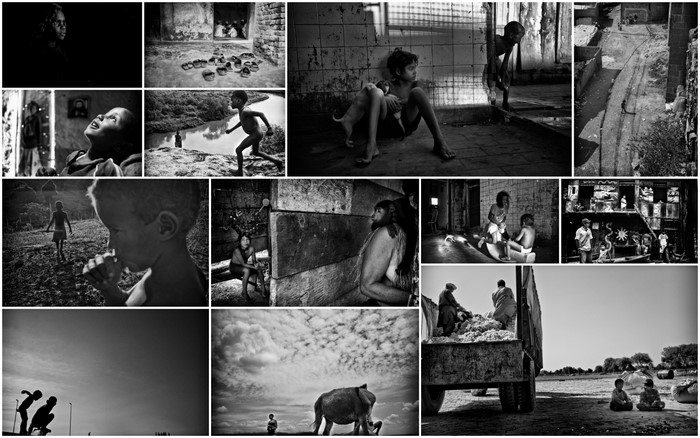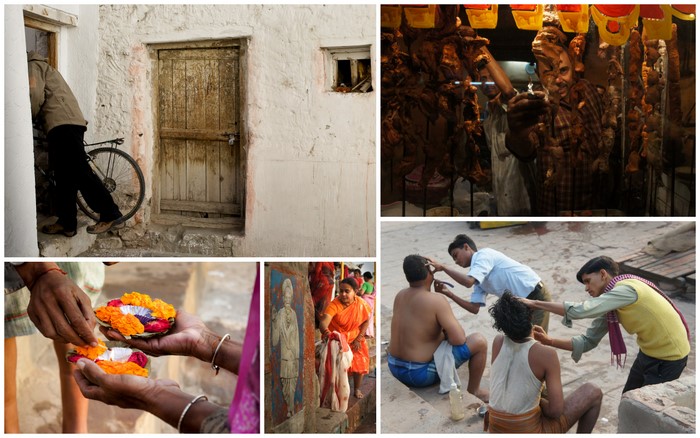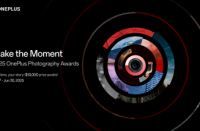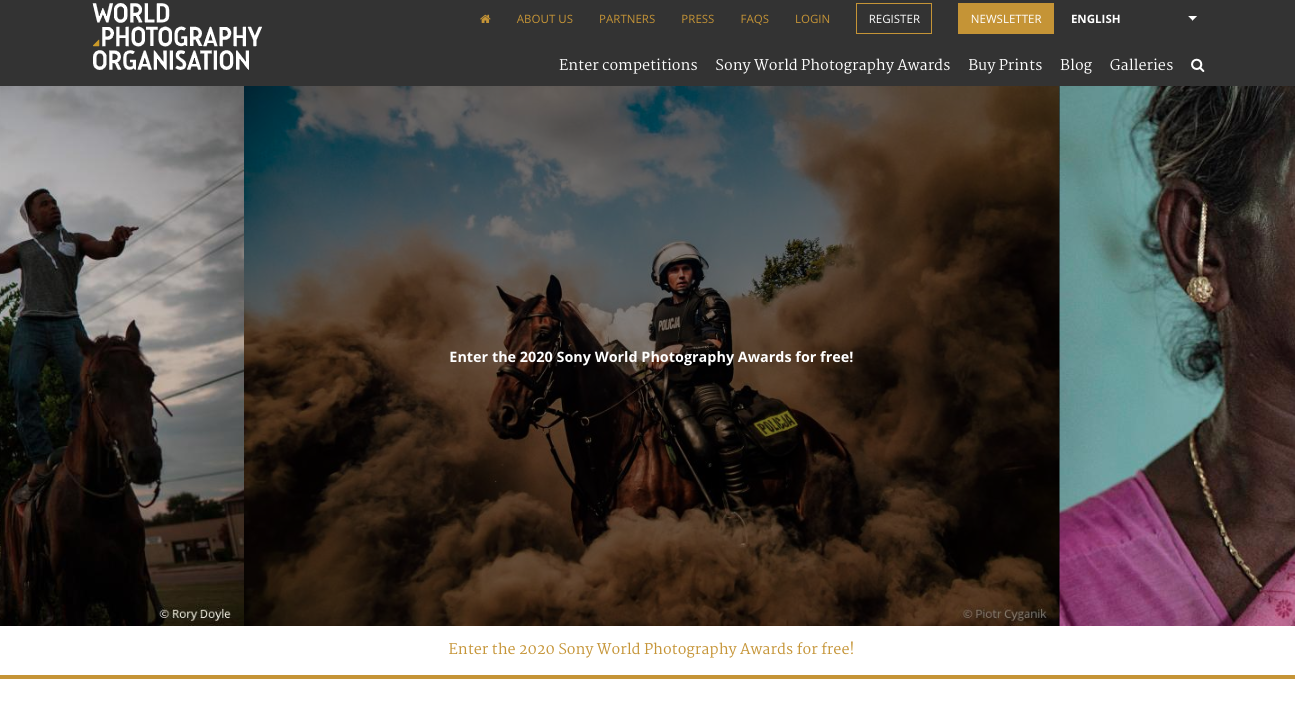
2 January 2012, Singapore – Do you photograph your memories during a holiday? What camera equipment do you use when you travel? How do you balance enjoying the moment versus capturing the right moment?
Well, if you like are a moderately serious photographer, here’re some tips from two Singaporean participants from last year’s Sony World Photography Awards –
James Chong – 57 year old optometrist won the best amateur photographer in the travel category for the 2011 Sony World Photography Awards with his winning photograph – a stunning shot of a farmer on his way to work in the fields. James has dabbled with DSLRs for a couple of years and feels that the level of images and photos he captured were not up to par, considering the professional equipment he had been using. James sought professional training from photography ‘master’ Chen Fen and embarked on a journey of self discovery.
Liz Loh-Taylor – 32 year old naturalised Australian born in Singapore is a multi-faceted photographer who has picked up an impressive string of accolades, despite having turned professional only two years ago. She won the “Travel (Professional)” category of the 2011 Sony World Photography Awards with an imprisive portfolio of awards including the likes of “Emerging Photographer, Journalism (Portfolio: 50+ years on)” at the 2010 Reportage Photo Awards, and for “Cultural/Daily Life” at the 2010 Worldwide Photography Gala Pollux Awars. She is respected for her strong travel photography pieces as well as humanitarian/social photography pieces.
By the way, if you are interested to find out more about this year’s Sony World Photography Awards which closes 4 January 2012, click here.

Tips by James Chong
TIP 1 – CAMERA/FRAME SELECTION: With the myriad different situations photographers often find themselves in, perhaps above anything else camera selection is of the utmost importance.
- Full-frame DSLRs
- More full-featured technical capabilities
- Drawback of capturing lesser frames per second
- Ideal for when ample time is available to capture the perfect shot – eg: landscape photography
- DSLRs
- Greater portability, maneuverability. Consider cameras which allow for shooting from multiple angles such as the SLT-A77 from Sony, which features a convenient Xtra Fine LCD with 3-way tilting, allowing for great convenience and flexibility, easily supporting everything from extremely low and extremely high camera shooting angles, to even shooting from the side
- Generally capture images at up to 10-12 frames per second
- Perfect for split-second situations such as street photography, yet are still able to display all the detailed shooting information you need. The Sony SLT-A77 featuring the world’s first XGA OLED viewfinder (2.4 million effective resolution) for example, displays not just easily accessible shooting information, but also your scene with incredible contrast, clarity and colour accuracy
TIP 2 – ACCESSORIES: Because a camera is only as good as the accessories one pairs it with.
- Lenses & Sensors
- Know the right lens to use, at the right time
- Wide-angle lenses: dynamically magnifies the scene, engages and invokes emotion
- Zoom lenses: to capture details when strongly focused on a singular subject (eg: Portraits)
- Understand the capability and/or limitations of your camera’s sensors in various situations and scenes. The new 24.3-megapixel EXMOR™ APS HD CMOS sensor in the Sony SLT-A77 for example captures superior image quality in ultra-high resolution and detail; the extra-large sensor raising sensitivity in low-light conditions, while strengthening background defocusing effects
- Flash Kits
- Misconception that it’s only for night usage
- Fantastic for lighting up a frame during the day as well
- Batteries
- Always carry at least one spare
- Memory Cards
- Carry one for each day of shoots
- Backup to a portable HDD each day if possible
- Tripods
- A lack of stability would ruin your perfect shot – bring a good one or not at all!
TIP 3 – RESEARCH: Do your homework!
- Understand the photo opportunities available
- Utilise Google, scope out the images and opportunities captured at the locale previously
- Prepare the appropriate equipment
- Not just camera gear, but also the footwear and dressing required (eg: Trekking boots on long walks)
- Understand the dos & don’ts of customs, tradition, and local processes
- Dress sensitively in places of religious worship
- Plan ahead in countries/areas requiring complicated permits
TIP 4 – COMPOSITION: Do not let a once-in-a-lifetime opportunity go to waste with poor image composition.
- Control the exposure of your shots
- Manually tweak aperture, shutter speed, frame rate and ISO settings to get the exposure that you like
- Sony’s SLT-A77 for example allows one to shoot up to 12 frames per second with full-time phase detection and auto focus; making the capture of fast moving subjects like race cars speeding past a breeze with the proprietary Translucent Mirror Technology
- Compare and contrast notes with fellow photographers
- Plan your set-up
- Ensure the right vantage point (eg: Landscape shots require high vantage points)
- Ensure sufficient lighting (eg: A compass would come in extremely handy to gauge the direction of the sun)
TIP 5 – POST-EDITING: Making a good shot great.
- Acceptable and encouraged in moderation
- Enhances colours, brings out emotions
Tips by Liz Loh-Taylor
TIP 1 – CAMERA/FRAME SELECTION: What to bring, how much to bring, when to bring it.
- Don’t focus too much on gear
- Bring the appropriate equipment for your trip
- Eg: Don’t overload on multiple spare cameras for a grueling hiking trip
- Travel light
- One camera, one lens!
- Cameras which allow for portability and maneuverability would be ideal. Consider one such as the SLT-A77 from Sony, which features a convenient Xtra Fine LCD with 3-way tilting, allowing for great convenience and flexibility, easily supporting everything from extremely low and extremely high camera shooting angles, to even shooting from the side
- Ask yourself what are you photographing, what’s the purpose of your trip?
- Although full-frame cameras are affordable at the consumer level today, ask if you really need it for the photography you’re intending to capture
- As long as you have a camera which has a resolution high enough for what you need, that’s good enough. Since at the end of the day, the focus is on taking a good photograph rather than capturing anything in sight
TIP 2 – ACCESSORIES: Your camera is only as good as the equipment going along with it.
- Lenses & Sensors
- Go with something that gives flexibility for shooting in various situational conditions
- Understand the capability and/or limitations of your camera’s sensors in various situations and scenes. The new 24.3-megapixel EXMOR™ APS HD CMOS sensor in the Sony SLT-A77 for example captures superior image quality in ultra-high resolution and detail; the extra-large sensor raising sensitivity in low-light conditions, while strengthening background defocusing effects
- Batteries
- A must to carry spares, as especially with travel photography, you never know the situations you might find yourself in
- “I have a phobia of having no electricity wherever I go… so for me personally I always charge up and carry 4 batteries!”
- Memory cards
- Bring at least two memory cards and alternate between the two
- This is to ensure that even if one fails you have a spare
- Do not just keep shooting until your memory card is full, clear it daily!
- Data back-up
- Back up images up to a portable HDD daily, as well as your laptop if you’ve brought one along
- In essence, ensure you have multiple channels of backup
TIP 3 – RESEARCH: Know what you’re getting into!
- Research is an absolute must
- Do as much research as you possibly can, even up to a month’s worth if required
- Make sure you have a good understanding of the location you’re headed to before setting foot there
- Ensure that you’ve got the relevant customs and traditions right
- Understand the appropriate dressing (e.g. women should not show skin in Pakistan)
- Take note of the places you should and shouldn’t go to
- Steer clear of streets and places which are unsafe for travellers
- Be open to local customs, do not unwittingly offend the locals (e.g. accepting hospitality of drinks like coffee in Northern Ethiopia)
- Utilise relevant resources such as the Lonely Planet forums
- Be wary of ‘commercialised’ information you find on the internet
- Source for information as close-to-the-ground and localised as possible
- Always try to speak to locals, get to know locals who’ll know the location much more intimately, and even possibly open up contacts on-the-ground where you’re headed
- One will never know as much of a local community as compared to the precise information from someone who’s actually lived there
- Stay in the same environment as the locals when possible
- Put yourself in their shoes, live their life as they live theirs
- Do not run off to the escape of a 5-star hotel at the first chance you get, you won’t fully experience the locale as much if you do
TIP 4 – COMPOSITION: Ensure that your perfect moments are captured beautifully as you envisioned them in your images.
- Patience
- When it comes to photography, one really needs that patience in terms of waiting for something interesting to happen rather than just capturing whatever’s in front of you
- Angle
- Move a couple steps left or right, back and forward, that alone changes the entire perspective of what you’re looking at
- This opens up a completely different viewpoint in terms of looking at your image’s composition
- Consider cameras which allow shooting from multiple angles for even greater convenience such as the SLT-A77 from Sony; which features a convenient Xtra Fine LCD with 3-way tilting, allowing for great flexibility, easily supporting everything from extremely low and extremely high camera shooting angles, to even shooting from the side
- Being observant, and anticipating what’s going to happen
- Sometimes situations are unfolding right beneath your eyes, and yet one does not notice them
- If you’re not observant, your camera wouldn’t be ready
- Sony’s SLT-A77 with the proprietary Translucent Mirror Technology for example allows one to shoot up to 12 frames per second with full-time phase detection and auto focus; allowing for the easy capture of fast moving subjects
- Ultimately there is no right way to photograph, no right way to compose
- Let your mind be free
- Do not be too focused on a subject, or too fixated on the composition and ‘force’ a shot
- “If your mind is free, your eye will start to see”
TIP 5 – POST-EDITING: Enhancing the essence of a beautiful shot.
- A photograph should have originated from the moment it was taken, not conjured up after
- Minor editing is acceptable
- Adjusting exposure
- Tweaking contrast
- Dodge and burn
- Conversion to black and white
Related articles
- Sony Alpha A77 & A65 Available in October 2011 (superadrianme.com)
- Canon EOS-1D X An Integration of 1D and 1Ds series (superadrianme.com)
- 50GB Free Online Storage On Box for Xperia Users (superadrianme.com)
- SanDisk New Suite of Products That Capture, Share & Preserve Your Digital Content (superadrianme.com)
- Canon PowerShot S100 More Than Just An Upgraded With DIGIC 5 Image Processor (superadrianme.com)
- Sony Ericsson Xperia pro Price and Availability (superadrianme.com)







